They have been the stalwarts of domestic cricket but somehow they never got their due commensurate to their consistent and outstanding performances over the years. Some of them represented the junior and senior Indian teams briefly while the others, unfortunately, always remained on the threshold of representing the country for various reasons and circumstances.
No Country For Old Reserves
For these colossuses of domestic cricket the call to national duty came in dribs and drabs, naught to some. Still, the love for the game keeps these gifted hands going.
Even if some of them, like tireless opening batsman Wasim Jaffer, got opportunities, they were either limited or were tested in extremely difficult conditions. At times, there were simply no vacancies in the national team, particularly for wicketkeepers who got only stop-gap chances as Mahendra Singh Dhoni virtually made that spot his own through his excellent performance. Madhya Pradesh’s Naman Ojha, Parthiv Patel of Gujarat and Tamil Nadu’s Dinesh Karthik are some of the stumpers from the Dhoni era to warm up the bench or pirouette on the sidelines.
The never-say-die Devendra Bundela, the unflinching pillar of Madhya Pradesh batting for most of the 23 years he played first-class cricket, was also unlucky. The selectors never seriously considered him beyond the India under-19 or the ‘A’ team; one reason was that the Indian team’s middle-order was chock-a-block with the likes of Sachin Tendulkar, Rahul Dravid, Sourav Ganguly and V.V.S. Laxman during most of the 1990s and later.
Rajasthan fast bowler Pankaj Singh, who switched to first-timers Pondicherry this season, never got a just deal from the national selectors when he was at his peak, energetic and gung-ho. Former Delhi batsman Milind Kumar falls in the same category, though at the state level. After a variety of reasons kept him out of the Delhi playing XI, he took a transfer, to newcomers Sikkim, and came out with flying colours. All avenues are shut but some of these dogged, ‘nowhere-to-go’ cricketers are carrying on in national tournaments.
Even in the past, there have been many similar instances. Left-arm spinning greats Rajinder Goel of Haryana (750 wickets in first-class cricket between 1958 and 1985) and Mumbai’s Padmakar Shivalkar (589 wickets, 1961-1988) never played Test cricket as they directly competed with Bishan Singh Bedi (1,560 wickets, 1961-1981). More recently, the selectors ignored Mumbai’s Amol Muzumdar (11,167 runs in 171 matches; 1993-2013), who smashed 260, then a world record, on his first-class debut against Haryana in 1994. Another giant was Rashmi Ranjan Parida (8,317 runs, 139 matches; 1994-2015), who represented Assam, Odisha, Rajasthan, and Vidarbha for 21 years.
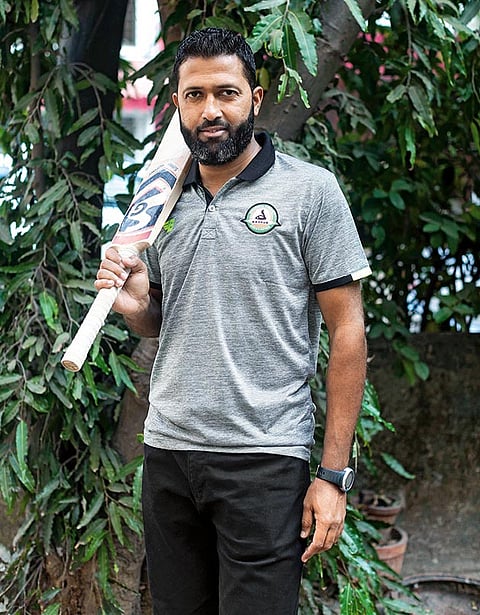
Wasim Jaffer, 40, Right-handed opening batsman
- 1996-97-Till date First-class career
- 31 /1,944 Tests/ Runs
- 2 / 10 ODIs / Runs
- 252 Matches
- 19,113 / 57 Runs / Centuries
Jaffer has been part of nine Ranji Trophy winners—eight with Mumbai and one with Vidarbha last season. He can add one more as Vidarbha have again made it to the final, against Saurashtra from February 3. This season he has so far amassed 1,003 runs—four centuries and two half-tons at 77.15—becoming the first batsman to score 1,000 runs in a Ranji season twice. He could become the top run accumulator of 2018-19 if he gets going in the final. Only Milind Kumar (1,331) is ahead of Jaffer, but his team Sikkim are out. Jaffer also holds the tournament record of most runs (11,741 so far), most centuries (40) and most matches (148).
Even at 40, Jaffer’s insatiable hunger for runs doesn’t seem to diminish, although he admits he no longer harbours hope of a comeback to the Indian team. His passion to score centuries remains steady. After he parted ways with Mumbai at the end of 2014-15, having captained them to Ranji Trophy triumphs in 2008-09 and 2009-10, he joined Vidarbha as a pro and helped them win their first Ranji title last season. A natural question, thus, arises: When a comeback to the Indian team is ruled out, what is Jaffer’s motivation? “When you play well and the team also plays well, it’s easy to motivate oneself. All my life I have only known and played cricket, so I can’t leave it. I want to keep playing as long and as much as possible,” Jaffer says.
An opening batsman in the classical mould, Test cricket tested Jaffer to the hilt. Twenty of the 31 Tests he played between 2000 and 2008 were on foreign soil, always a tough proposition for Indian batsmen. “I believe in destiny. It had to happen. Everyone gets what he deserves. I don’t blame anyone or the circumstances. I have no regrets,” he says.
Sudhir Naik, schooldays coach of Jaffer and a former India player, says his love of cricket keeps him going. “He has survived for so long because he is passionate about the game and loves to bat. He has been going to play in the English league for about four months every year in the Indian off-season for about 20 years. He has the basic technique to play on the back foot against fast bowlers that has helped him prolong his career,” he says. Jaffer’s two-year contract with Vidarbha ends this season. He might play for a few more, mind and body willing. After retirement he would look to try his hand either at coaching or commentary.
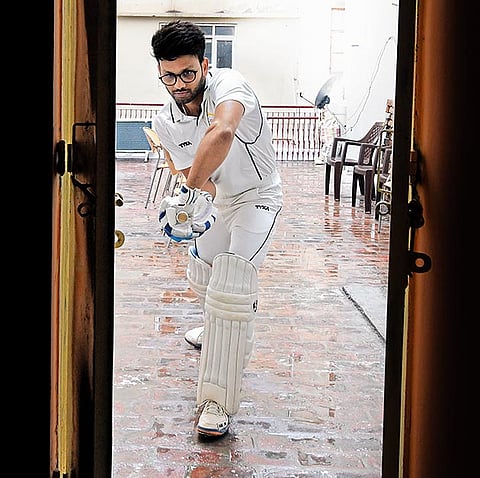
Milind Kumar, 27, Right-handed middle-order batsman
- 2011-Till date First-class career
- 37 First-class matches
- 2,539 / 8 Runs / Centuries
He began the current Ranji season with a bang, smashing 261 for adopted team Sikkim, against Manipur, and didn’t look back since. The former Delhi middle-order bat finished the season with 1,331 runs at an average of 121 and a strike rate of 91.66 in eight matches. The tally is just 84 short of V.V.S. Laxman’s Ranji record of most in a season (1,415 in 1999-2000). And Milind’s six centuries, including two double tons, are two behind Laxman’s eight, scored in 1999-2000. Milind also bagged 22 wickets with his off-breaks, though Sikkim, one of the nine new teams in domestic tournaments, failed to earn a promotion from the Plate Division.
With a change in team changed Milind’s fortunes, and what a transformation it was. What made him leave Delhi, though? Answer: Lack of enough opportunities. He had made his first-class debut with a century, 119 against Haryana, and winning the Man of the Match award in 2011-12. He has had some good seasons, like in 2016-17 he tallied 359 runs in Ranji and in 2016-17 he was the second top scorer for Delhi with 485. But he was off-colour in 2017-18, managing a mere 84 in six innings. As 2018-19 season
approached, he lost his mother and then his place in the team for the Vijay Hazare Trophy. Milind read the writing on the wall. Luckily for Milind, former India pacer Sanjeev Sharma, who as Delhi coach had seen him from close and was aware of his calibre, had become Sikkim coach. Sikkim decided initially to not hire pros but changed their mind after the team’s poor show in the Vijay Hazare Trophy. “I told the coach to get me the bio-data of the best left-out players that he knew. Sanjeev sent me three, and one was Milind’s,” says Sikkim chief Lobzang G. Tenzing. Milind took the opportunity with both hands.
“When Delhi dropped me I told myself I would make so many runs that they would have to pick me. I was not disheartened. In the off-season, I worked hard for two-and-a-half months under my coaches Tarak Sinha and Uday Gupte. I played with a free mind, my own natural game for Sikkim,” says Milind. Sanjeev agrees: “He took more responsibilities as when he went to bat half the team was out often.”
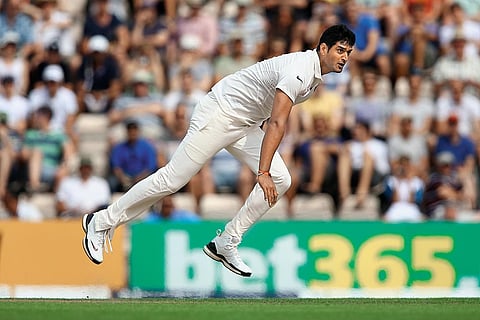
Pankaj Singh, 33, Right-arm fast bowler
- 2004-Till date First-class career
- 2 / 2 Tests / Wickets
- 1 / 0 ODI / Wicket
- 117 First-class matches
- 472 Wickets
Often, it is not just performance, hard work and talent that determine a cricketer’s chances of making the India team. Honest and fair selectors, timely selection, and a supportive captain are pieces that must fall in place together. Lanky right-arm pacer Pankaj Singh never had all these factors working for him together. And then, he played for a weaker side, Rajasthan—usually beset with politics. Despite the handicap, Rajasthan shocked all by winning the Ranji Trophy in 2010-11 and 2011-12, with Pankaj as the mainstay.
He had taken a bagful of wickets before. But the wise selectors somehow never felt that he, too, deserved an opportunity in the national team. Finally, they woke up in 2010 and gave him the ODI debut, resting the seniors for a nondescript triangular in Zimbabwe. He went wicketless in the lone game he played. The selectors again went into a long, four-year slumber, and woke up in 2014. This time, the Tests were in England and Pankaj—and the famed Indian bats—failed. He got two Tests, India lost both. India lost the five-Test series 1-3—and Pankaj was forgotten forever.
Pankaj puts up a brave face today. “I never thought had I done this or that things would’ve been different. I have achieved a lot. If you decide to complain there are thousands of reasons,” he says. He quit Rajasthan after 14 years to represent first-timers Pondicherry this season. About the 2014 England tour, he says: “Dhoni and the media praised me. I know I bowled well but was unlucky on wickets. All part of the game.” Catches off his bowling were dropped and appeals turned down.
He harbours no India-comeback goals but is motivated. “I’m enjoying my cricket; competing with myself. I’m the first pacer to take 400-plus wickets in Ranji,” he says. The other eight are spinners. “I set goals of four-five wickets a match, and try to beat my own goals.” He bagged 45 wickets in eight Ranji matches—the eighth best this season. But Pondicherry missed topping the Plate Division and a promotion to the Elite Group. Now, Pankaj is preparing for the shorter format and mentoring Pondicherry’s youngsters.
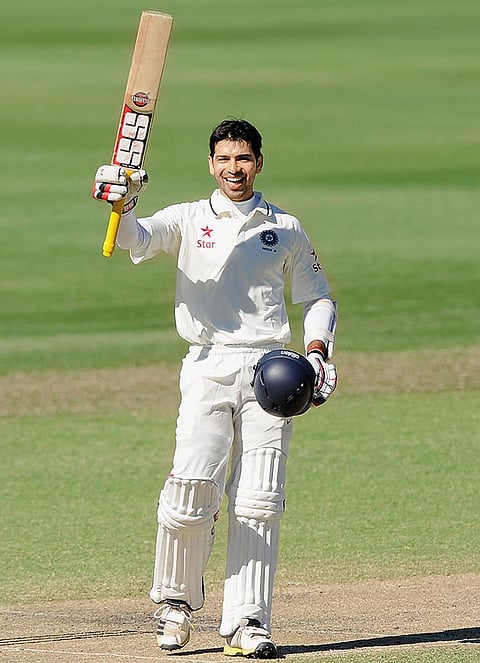
Naman Ojha, 35, Wicketkeeper-batsman
- 2000- Till date First-class career
- 1 / 56 / 4 / 1 Tests / Runs / Catches / Stumping
- 1 / 1 / 1 ODI / Runs / Stumping
- 2 / 12 T20s / Runs
- 143 Matches
- 9,560 / 417 / 54 Runs / Catches / Stumpings
Naman made his first-class debut in the 2000-01 season—a year after M.S. Dhoni, a year before Parthiv Patel, two years ahead of Dinesh Karthik, and seven years before Wriddhiman Saha. Dhoni went light years ahead, playing 90 Tests before retiring. Saha played the most Tests (32) after Dhoni, and then Karthik (26) and Parthiv (25). Naman got stuck on one, though not his fault. Such is cricket with all its glorious fickleness. Wicketkeeping is, in fact, not just thankless but needs mountains of patience and a large dose of luck to play at the highest level—international cricket.
Naman is somewhat like Pakanj Singh, signing on the Test XI sheet, before the selectors deleted his name. Undaunted, Naman, the man with Bollywoodish looks, chugs along, hoping against hope. “If Dhoni and Karthik can [aged 30-plus], why can’t I? If Kedar Jadhav, a great chap, can [aged 33], why can’t I?” he says about his chances of playing for the national team. “I have one per cent chance…you never know. My father keeps telling me that god is great. That is my motivation.” Naman, who played one Test in 2015, still hopes for a comeback; he has also not thought about retiring from first-class cricket. “I can play five-six years more, and if I push myself harder I can stretch another two-three years.”
The milestones that come along the way must surely have motivated Naman, who now doubles up as Madhya Pradesh captain. During the season, he broke the Ranji record of most dismissals (335) held by Vinayak Samant. Naman now has 351 dismissals. He is placed third with 31 dismissals in eight Ranji matches this year but he is not satisfied with his performance. “I’m not content. I always want more dismissals, more runs, more hundreds. I’m also not happy that Madhya Pradesh didn’t qualify for the quarter-finals,” he rues.
At 35, Naman says he is fitter than before. “I feel like a 20-year-old. I want to win more trophies, tournaments, whichever team I play for. That’s my ultimate goal. Also, I am much more disciplined now. I’ve learned to say no to late nights, carbs and sweets,” he says. All these sacrifices will be rewarding if he gets picked in the year of the 50-over World Cup. After all, he is banking heavily on the one per cent hope.
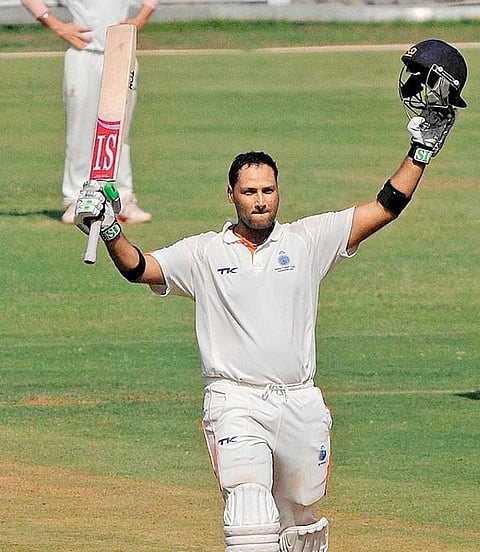
Devendra Bundela, 41, Right-handed batsman, pacer
- 1995-2018 First-class career
- 164 Matches
- 10,004 / 26 Runs / Centuries
Bundela would automatically qualify for discussion whenever domestic cricket heroes who never represented India are mentioned. He toiled long and hard for 23 years, representing Madhya Pradesh in first-class cricket between 1995 and 2018, a period during which there was hardly an opening in the Indian team’s middle-order with the Fab Five—Tendulkar, Dravid, Ganguly, Laxman, Sehwag—filling the slots.
The closest he came to forcing the selectors to possibly discuss his name was in 1998-99, his most prolific season when he amassed 1,008 runs in 11 matches at a fabulous 77.53, with two centuries and seven half-centuries.
Alongside his own purple patch, Bundela helped the Chandrakant Pandit-captained Madhya Pradesh come closest to winning the tournament in its history. They, however, ended up losing to host Karnataka on a spin-friendly pitch in Bangalore. “My best time was in late 1990s when we got into the Ranji final. If we had won, maybe I and a few other MP players could have got a look-in. But I believe in destiny. Many good players never played for India,” says Bundela, now Madhya Pradesh’s batting coach.
Bundela captained the state for eight years, starting 2010-11, and set the record of playing the most Ranji Trophy matches (145), which Jaffer erased this season. “I became mentally strong after becoming captain. You have to be on the front and play a part in the decision-making. My concentration improved after becoming captain as I had to set an example. If you love the game you focus what is in your hands,” he says.
He read books on mental strength to learn leadership. “I read books on baseball and on how successful men achieved what they did. I like motivational books. I read Mind Gym in 2009-10 and it helped me,” he says. Despite not getting big breaks, Bundela carried on. “Playing for Madhya Pradesh was a motivation itself. I would surely get disheartened but that feeling would not remain with me for long,” he insists.
Sanjay Jagdale, a former national selector and Madhya Pradesh captain, says Bundela played in the wrong era. “Unfortunately, he was competing with the four greats [Tendulkar, Dravid, Laxman and Ganguly]. It was sheer bad luck, nothing else. He was also a decent swing bowler. If you bowl, it gives you an advantage in limited-over cricket. But he stopped bowling in the late 1990s to focus more on batting,” says Jagdale, a former president and secretary of the Madhya Pradesh Cricket Association.